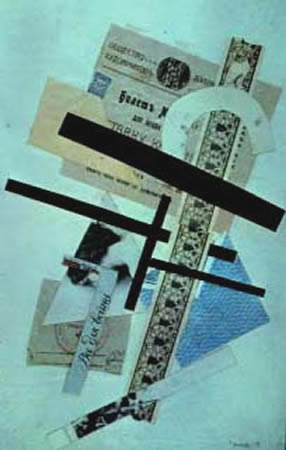|
Home>Visual
Arts>Introduction to Constructivism and Rodchenko's Collage
Constructivism: 1 2 3
4 5
6 7
8 9
In the late teens and early twenties, Soviet artists and designers
attempted to put their talents to use for the new communist state.
Most abandoned easel painting, even in its most radical forms,
as overly bourgeois, and turned instead to design. The general
slogan of these "constructivists" was "Art into Life" and their
goal was, as Tatlin put it, "to unite purely artistic forms with
utilitarian intentions." In their most extreme formulations, the
constructivists announced "Art is finished! It has no place in
the human labor apparatus. Labor, technology, organization...that
is the ideology of our time." (For full texts of constructivist
manifestoes, see Bowlt, pp. 205-261) Despite the ostensibly utilitarian
nature of the Constructivists' concerns, the vast majority of
their projects were utopian in nature and never reached a mass
audience.

Constructivist Collage (1919)
Alexander Rodchenko (1891-1956) was a student of both Malevich
and Tatlin in the period
just before the Revolution. This "Collage" of 1919 combines the
dynamic vertiginous axis and strict geometrical shapes typical
of Malevich's later suprematist works with the use of different
materials pioneered in Russia by Tatlin. During the 1920s, Rodchenko
became one of the leading constructivists, and turned away from
painting to photography, furniture and poster design. In 1929,
he designed costumes and sets for Meyerhold's
production of the second half of Mayakovsky's play The
Bedbug.
|